Practice’s Water Tower project creates ‘ingenious eco-build’ family home
Tonkin Liu Architects has won the 2021 Stephen Lawrence Prize for its conversion of a steel water tower in rural Norfolk into a unique family home.
It is the second time the practice has picked up the prize, which targets projects with a budget of less than £1m. Its first winner was Old Shed New House in 2018.
The Water Tower beat projects by Craftworks, Denizen Works, Dow Jones Architects, Adam Richards Architects and Tsuruta Architects.
Judges said the Tonkin Liu scheme was an “ingenious eco-build” that masterfully retained much of the Castle Acre tower’s original metal structure.
A spiral timber staircase and lift lead to the original water tank, which has been converted into a cantilevered open-plan living space with adaptable interiors and seating that can be moved around the main tank room. The structure also boasts a roof terrace.
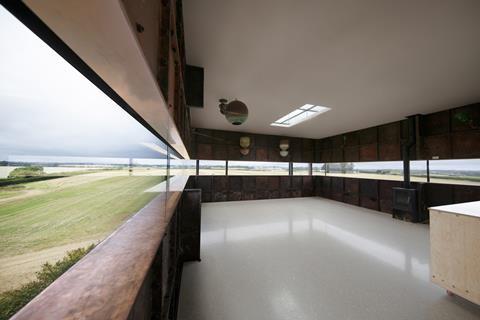
Past RIBA president Marco Goldschmied, whose foundation sponsors the Stephen Lawrence Prize, said Water Tower demonstrated how buildings could be “saved and enlivened” through expert retrofitting, high-quality craftsmanship and faultless attention to detail.
“The jury unanimously commend Tonkin Liu – the worthy recipient of the 22nd Stephen Lawrence Prize – and their ambitious client for their creativity and dedication,” he said.
“With the positive support and involvement of the local community they have breathed new life into this historic rural structure to create a truly unique family home.”
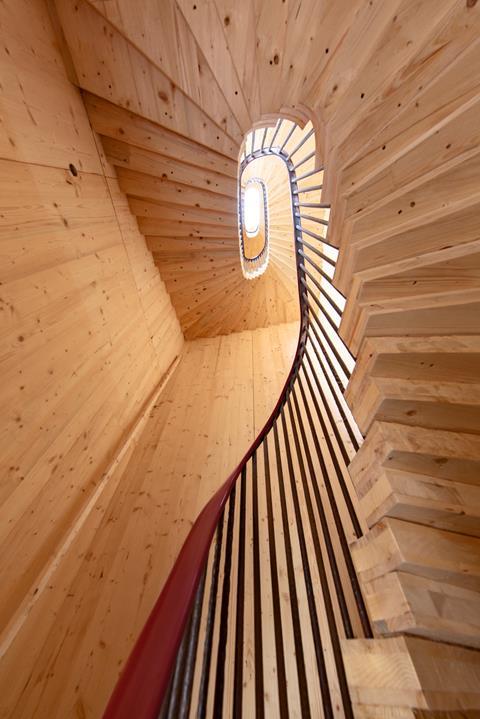
Goldschmied said that for the fourth time in the history of the awards judges had decided to give a special mention to a shortlisted project that did not win: Denizen Works’ Floating Church.
Tonkin Liu receives a £5,000 bursary as its prize for winning the competition; Denizen Works’ award is £1,000.
The annual architecture award was created in memory of London teenager Stephen Lawrence, who aspired to become an architect but was murdered in a racially motivated attack in 1993.
All our Stirling Prize coverage
>> Also read: Grafton Architects’ Town House wins Stirling Prize
>> Also read: Peter Barber bags Neave Brown Award for Housing
>> Also read: Tonkin Liu notches up second Stephen Lawrence Prize
The Water Tower by Tonkin Liu Architects: Full citation by visiting jury chair Mary Duggan
“The challenge to convert a disused historic water tower into accommodation has been handled effortlessly, completely avoiding pretentious reinterpretation or cliché. Standing tall within a setting of fields of barley, the Water Tower, whilst extensively refurbished, has retained a strong and honest agricultural aesthetic.
“In heritage terms, its status as one in a sequence of historic ruins within Castle Acre is not impacted and, in this particular case, [it remains a] familiar unobstructed stilted silhouette figure. Purchased for the equivalent value of scrap metal, a strong attitude towards reuse has been tirelessly pursued, with all materials already within the existing structure carefully reconfigured or relocated to formulate a new domestic programme, and with all necessary new materials hoisted carefully through the retained externalised braced structure.
“The entire structure has been ingeniously (re)engineered to account for the absent weight of water and the additional distribution of new accommodation loads. The existing water tank is cut laterally to create a 360-degree panoramic window aligned with the visible horizon. This forms an elevated living space in which the original water equilibrium devices remain suspended. Larger interventions include CLT cantilevered stairs serving as a compression spiral to stabilise the adapted structure and to also function as a passive stack ventilation chamber.
“Whilst highly technical in description, it is very graceful. The tower is infilled with a series of accommodation floors also in CLT and window units used in optimised dimensions, with each floor containing a mezzanine bed bunk. The appearance of the original stilted silhouette is achieved by the inclusion of an enclosed bridge link between the stair and stacked floors.
“With nowhere to hide in this amazing setting, the structure is both brave and frugal, a gentle giant. Not only is the architectural salvage an excellent example of a new emerging construction methodology, the design also intelligently fuses both low carbon measures and structural engineering. The overriding feeling is one with a very happy ending; a fairy-tale in which the tower magically re-builds itself.”









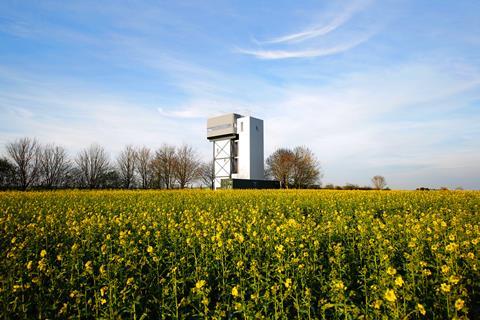


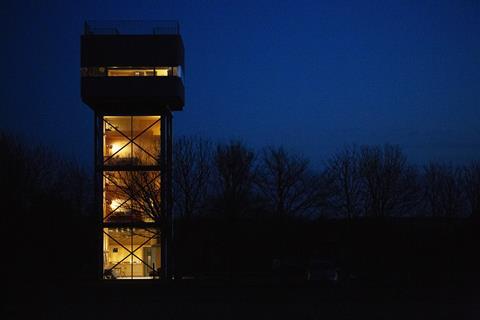
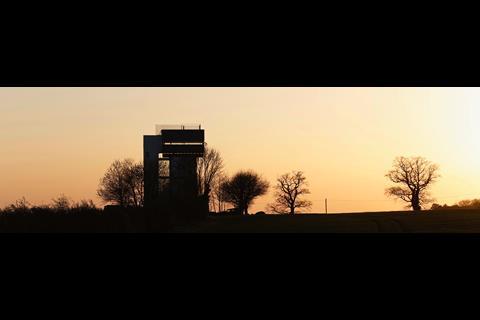







No comments yet